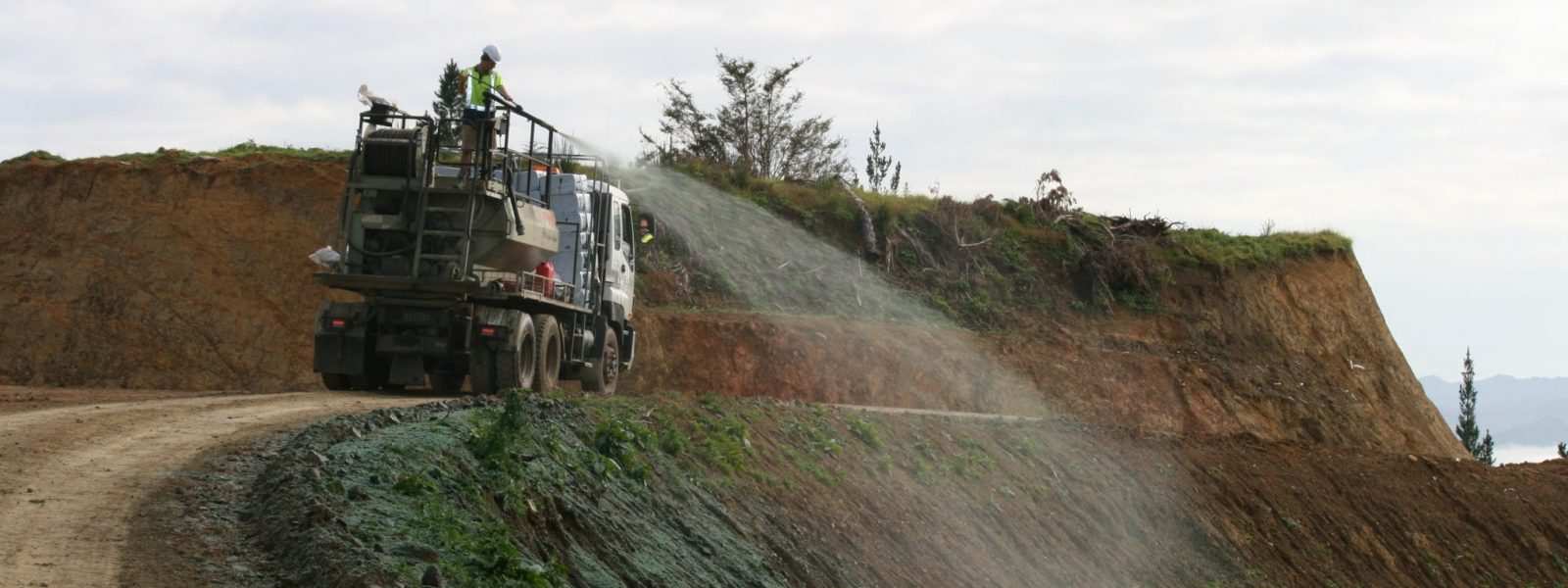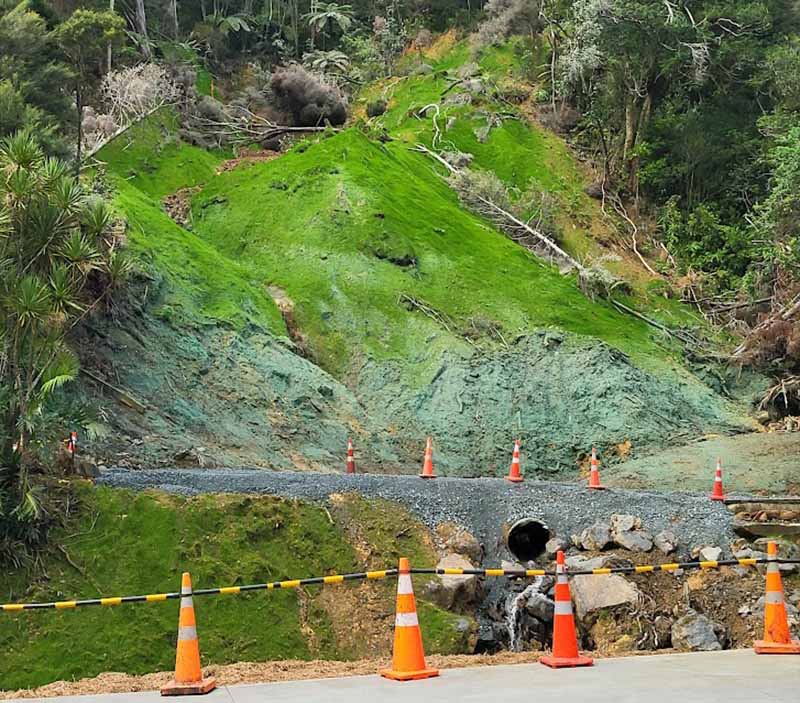Preventing Soil Erosion in Construction Sites: Best Practices
Runoff from exposed earth can wash sediment into drains and streams, strip nutrients from the soil and put construction projects in breach of resource-consent conditions. Fortunately, a mix of modern hydraulic revegetation and tried-and-true mulching cover can stabilise ground quickly, ensuring that work can continue.
This guide outlines two proven approaches that Enviro360 applies across Auckland and Northland so you can select the correct type of erosion control needed for your site.
Hydroseeding: Preventing Erosion by Replanting Native Vegetation
Hydroseeding sprays a slurry of certified seed, fertiliser, tackifier and a protective mulch over the bare earth. The mixture bonds to the surface, germinates quickly and knits the soil together with deep-rooted vegetation. When native seed mixes are selected, the new cover also restores local biodiversity and can blend seamlessly with the surrounding landscape.
Boosting results with effective Hydroseeding matrices
Construction platforms often sit on stripped or nutrient-poor soils. By adding a thin layer of ProGanics® Biotic Soil Media™ to the slurry, Enviro360 replaces truckloads of imported topsoil and jump-starts microbial activity. Four to five tonnes per hectare of ProGanics® can lift organic matter, improve water-holding capacity and accelerate root development, making even the poorest of soils ready for seeding.
Locking it down on Steep Faces
Slopes steeper than about 1 vertical : 3 horizontal will require additional measures. Flexterra® products form a flexible and breathable blanket over the hydroseed, delivering more than 99% immediate effectiveness. This matrix is fully biodegradable, non-toxic to aquatic life and holds up to seventeen times its weight in water, keeping seeds moist throughout dry weather conditions.
Key Advantages of Hydroseeding
- Fast germination: green shoots often appear within seven to ten days.
- High water retention: less irrigation is needed during establishment.
- Instant dust and sediment control: the matrix bonds directly to the surface, trapping fines in windy conditions.
- One-step application: ProGanics® and Flexterra® can be sprayed in the same pass, saving time compared with laying blankets or trucking in topsoil.
Ideal Hydroseeding Applications
- Road and rail corridors: long, steep batters benefit from rapid stabilisation once they are cut or filled.
- Subdivision earthworks: hydroseeding keeps silt on site and improves kerbside appeal.
- Pipeline or service trenches: a single spray coats hard-to-reach places quickly.
- Stockpiles and borrow pits: a ProGanics® boost brings stored soils back to life and supports rapid growth of cover crops.
Hay Mulching: Protecting the Ground for Revegetation
What is Hay Mulching?
Hay or straw mulch is blown or spread over freshly seeded ground to form an organic blanket around 25–50 millimetres thick. This layer shields seeds from rain splash, birds and evaporation while adding nutrients as it slowly breaks down.
Benefits of Hay Mulching
- Erosion control on mild slopes: mulching absorbs rainfall impact and slows run-off, so seedlings can anchor their roots.
- Moisture retention: reduced surface evaporation lengthens watering intervals.
- Extended sowing window: the micro-climate beneath the straw moderates soil temperature, allowing you to sow in late autumn or early winter.
- Immediate dust suppression: visible straws rapidly calm exposed soils on haul roads and subdivisions.
Where Hay Mulching Shines
- Large, gently sloping platforms: economical coverage for bulk earthworks awaiting the next construction stage.
- Road margins and berms: straw protects verges until permanent landscaping is complete.
- Cut-to-fill pads: Single-layer pads prevent straws from blowing into neighbouring properties during summer.
A Complementary Approach to Hay Mulching
On most large sites Enviro360 uses hydroseeding and hay mulching together. Steep cuts or highly erodable soils receive the ProGanics® + Flexterra® matrix for immediate protection, while flatter areas are spray-seeded and mulched with hay for effective coverage. This approach produces an unbroken green cover that stops sediment reaching waterways and keeps programmes on schedule.
Choosing the Right Soil Erosion Treatment for Construction Site
- Testing the soil: if organic matter sits below 5%, we recommend hydroseeding to rebuild and improve soil structure.
- Matching the cover to the risk: use Flexterra® on steep slopes or high-run-off areas; use hay mulch where slope grades are gentle.
- Specifying certified seed: native or amenity grasses suited to local conditions give the best long-term stability and finish.
- Planning for inspection and maintenance: check for bare patches after heavy rain and overspray if required.
Enviro360 sources ProGanics® BSM™ and Flexterra® HP-FGM™ directly from trusted NZ suppliers, ensuring full traceability and reliable product support.
Ready to Protect Your Construction Site From Soil Erosion?
Effective erosion control protects waterways, avoids costly rework and keeps your construction project ongoing. Enviro360 can test your soil, recommend the correct matrix or mulch, then apply it anywhere in Auckland or the Northland Region. Call 09 435 0755 or enquire online to book a site appraisal.


Leave a Reply